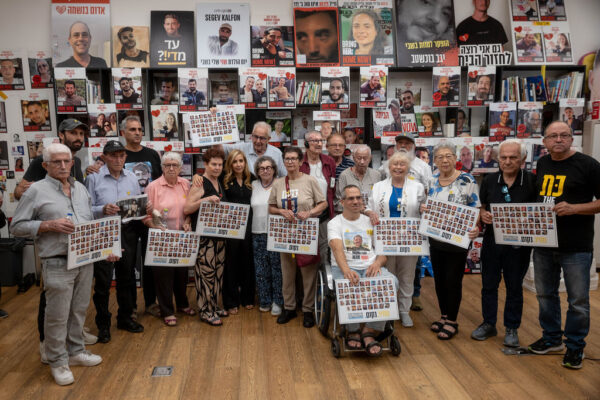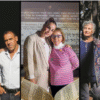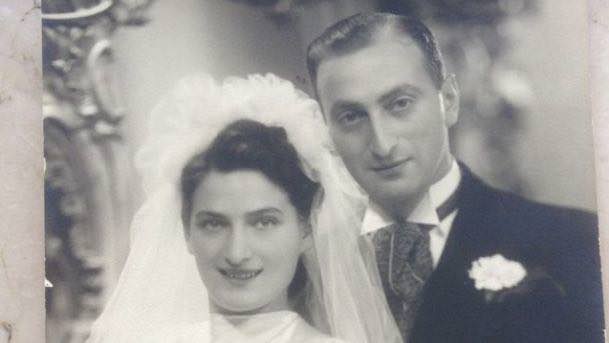
Mimi Dwinger and Barend Boers on their wedding day, 18.4.1939. Courtesy of the family.
Haaretz – For decades the home movies from the wedding of a Dutch Jewish couple, Mimi Dwinger and Barend Boers, lay in a suitcase that no one was to open. The bride and groom, who miraculously survived the Holocaust, did not tell their children about the special keepsake from their 1939 nuptials. It’s possible that they were afraid to look at the film in light of the fact that, grimly, based on the survival statistics of Jews in their town, 80 percent of the people who appear in it, including relatives and friends, would not have survived the Holocaust.
“Most of the people that you see in this wedding movie were not alive a few years later,” says André Beurs, one of the couple’s children. “As children, we knew that there was a suitcase that we wouldn’t touch. We weren’t allowed to.” Ultimately, in 1979, when his father died, he asked his mother to allow him to open the suitcase. “No, no need, there’s no time,” she told him repeatedly. “I eventually understood, of course, that it was hard for her to deal with what was in the suitcase,” he says.
A decade ago, in 2007, his mother died as well, shortly before her 91st birthday. It was only then, with fear and trembling, that the son approached the suitcase in the company of his sisters and opened it.
What they saw included letters, documents and even medals that their father, who participated in the invasion of Normandy, was awarded. But the real treasure awaited them underneath everything else.
“On the bottom of the suitcase I found little boxes that had the name Kodak written on them,” André recounts. When he opened them, he found 8 mm film – movies from his parents’ wedding on April 18, 1939 in the Dutch city of Leeuwarden, the capital of the province of Friesland. “I saw so many people in it that I didn’t know, aunts and uncles that I couldn’t identify,” he recalls with emotion.
In the years that elapsed since they opened the suitcase, André Boers and his sisters deliberated over what to do with their historical family discovery. “On one hand, my parents never spoke about the war and didn’t want to deal with what happened,” he explains. On the other hand, the movie was an extraordinary and rare item from the period and the region.
In the end, its historical importance won out. Boers, who is now the chairman of the Center for Research of Dutch Jewry at the Hebrew University of Jerusalem, understood that the research value of such an item is priceless.
Several months ago, he showed the movie to an emotional staff at the film archive of the province of Friesland. “They fell off their chairs. They had been looking for years for documentation of the life of the local Jewish community and had reconciled themselves to the fact that it didn’t exist,” he said.
At the end of January, the movie was posted on YouTube and has been viewed 21,000 times in the short time since. It also quickly caught the eye of Haim Giozli, the director of the database department at the Beit Hatfutsot Museum of the Jewish People in Tel Aviv, who realized that it was a real archival treasure.
With the help of Simona Binyamini, who is in charge of the museum’s film collection, Beurs found a resident of the Israeli town of Zichron Ya’akov who is the son of one of the couples who appear in the film. A copy of the film is to be provided shortly to Beit Hatfutsot, as an addition to its existing archives, which documents Jewish communities around the world. The collection already includes two films of Dutch Jewish weddings from the Holocaust.
Watching Beurs’ parents’ wedding movie is a jarring experience. It provides a fascinating glimpse at the good life of the Jewish community in the Netherlands shortly before almost all of it was destroyed. As noted, most of those in the movie would not have been alive to attend André’s brit milah, his Jewish ritual circumcision.
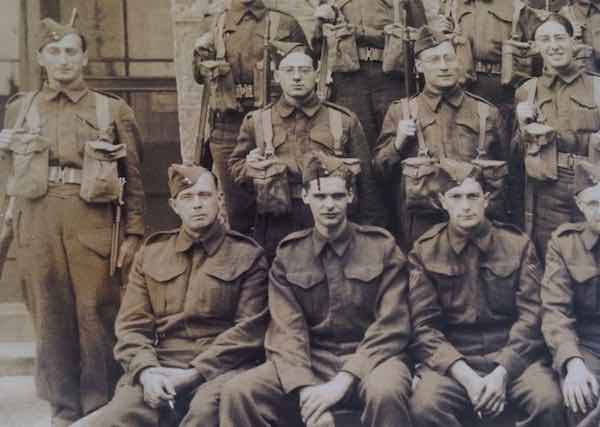
Barend Boers on the left, with a rifle. Courtesy of the family.
Those who perished included André’s mothers’ parents and his father’s two brothers. “All of them were murdered in the camps. I never met them,” he says.
The movie also features a prominent figure – the chief rabbi of North Holland, Abraham Salomon Levisson, who officiated the wedding. At the end of World War II he was liberated from the Bergen-Belsen concentration camp on a “freedom train,” but died on the train on May 5, 1945, the day the Netherlands was liberated from Nazi occupation.
Talking to Haaretz, André Beurs rattled off the history of his family with ease. Mimi Dwinger was born in 1917 to a family that had been living in Friesland since 1542.
Barend Boers was born in Amsterdam in 1910, to a family that could trace back its roots there to 1620. The two families knew one another, as both were in the textile business.
When Barend Boers was 14, he left school and was sent as an apprentice to learn the trade with his future father-in-law in Leeuwarden. His future wife was just 7 at the time. Years later, in 1938, on his parents’ advice, he returned to Leeuwarden to take Mimi as his wife. He was 28 and she was 21.
Mimi Dwinger and Barend Boers on their wedding day, 18.4.1939.Courtesy of the family
The wedding, in 1939, in keeping with local custom, took place in the bride’s home town, at the city hall and in the synagogue, after which the couple settled in Amsterdam. The ceremony is well-documented in the film, which features not only the wedding couple but their families, friends, the rabbi and the synagogue.
In 1940, the Nazis invaded the Netherlands. Mimi was arrested and imprisoned. From there, it would have been expected that she would be sent to a transit camp and from there to her death. But despite great difficulty, her husband managed to get her released from prison. “He may have been assisted by the Dutch underground. He may have paid money to have her freed. I don’t know,” his son recounts.
From that point, in August 1942, their amazing escape began, which was to take them through Belgium, France and Spain and included crossing the Pyrenees mountains, arrests, flight and liberation, ending in Jamaica, where the Joint Distribution Committee set up a camp for Dutch Jewish refugees.
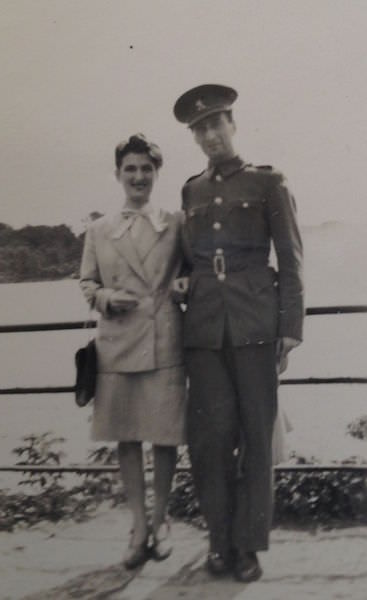
Mimi Dwinger and Barend Boers in Jamaica, 1942. Courtesy of the family.
Barend Beurs left there for Canada, where he joined a Dutch battalion and after military training was sent to England and later participated in the invasion of Normandy. When he returned to the Netherlands, he discovered that his brothers had been murdered, but he found his mother alive. She had hidden in a closet for three years in the home of one of the employees of the family plant in Amsterdam.
Mimi stayed in Jamaica for a year and then moved to England. Her two brothers were pilots who fought the Nazis. One of them, who served in the British army, appears in the wedding film. The second, who was in the Dutch army, missed the wedding because he was in a flight course at the time.
On May 5, 1945, Mimi received a telegram from her soldier husband. “Holland is liberated. You can return,” it read. Barend Beurs decided to reopen the family textile factory that the Nazis had burned. He worked there until he was 60. Mimi was a housewife and raised three children. One of them, André, immigrated to Israel.
Originally published HERE

